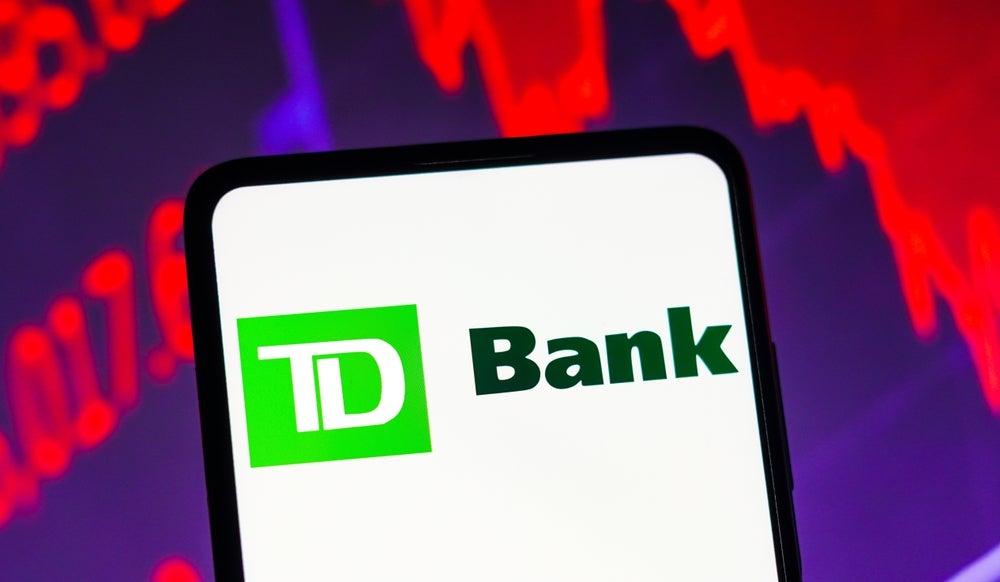Akbank’s Hakan Binbasgil,
deputy CEO and chief retail banking officer, and Tunc Akyurt,
executive vice-president strategy, CRM, channel & product
development, tell Duygu Tavan why the rise in reserve capital
requirements, historically low interest rates and cap on credit
growth do not threaten Akbank’s ambitions.
 The Turkish
The Turkish
banking sector is not going through a quiet period. The country’s
banks – admired for staying afloat during the financial storm – are
now caught in another whirlwind.
The Turkish central bank has been
steadily raising reserve capital requirements for banks to curb
lending to consumers as part of its strategy to discourage the
inflow of short-term foreign capital investments – so called hot
money – which would eventually lead to an overheating of Turkey’s
stable economy.
Although widely acknowledged as a
credible strategy, banks across the sector nonetheless acknowledge
– and often in a harsh tone – that the profit surge they have
become used to over the past few years will cease in 2011.
In this issue, RBI
commences its series of interviews with senior Turkish banking
executives to identify banks’ ambitions in light of the central
bank’s macro-prudential fiscal restrictions.
How well do you really know your competitors?
Access the most comprehensive Company Profiles on the market, powered by GlobalData. Save hours of research. Gain competitive edge.

Thank you!
Your download email will arrive shortly
Not ready to buy yet? Download a free sample
We are confident about the unique quality of our Company Profiles. However, we want you to make the most beneficial decision for your business, so we offer a free sample that you can download by submitting the below form
By GlobalDataThe series kicks off with Hakan
Binbasgil, deputy CEO and chief retail banking officer at Akbank,
who argued that innovation was in the genetic make-up of the bank
and that it would continue to innovate.
The series continues with Tunc
Akyurt, strategy executive vice-president in charge of customer
relationship management (CRM), channel and product development at
Akbank, who outlined the bank’s strategic investments.
It has been exactly a year since
RBI spoke to Binbasgil, who back then had explained the
reasons for success at Turkey’s third-largest lender by assets
(see Akbank outlines reason for success).
Twelve months on, Binbasgil
maintained his confident outlook – not just for Akbank, but for the
whole Turkish banking sector – despite the margin pressure.
“The actions by the central bank
are, actually, appropriate,” he said.
“We have to consider the effects of
the decisions not in the short term, but in the long term.”
Binbasgil acknowledged that in
order to maintain sustainable growth of the banking market, the
central bank’s precautions were right.
“[The measures] will of course
affect the banking sector, in particular loan growth,” he said.
But he added that the central
bank’s prudence needed to be considered in relative terms, too.
The central bank has put a cap on
credit growth, limiting it to 25% annually – a major restriction,
considering credit grew by just under 35% in 2010.
But how many other countries can
boast an annual credit growth of 25%, Binbasgil argued.
“Looking back at the past eight
years [when Turkey emerged from its banking crisis], our assets
across the sector have increased by 21%, loans by 35% and deposits
by 21% on average per year,” Binbasgil said.
“Net fee income has risen by 23%
and profitability by 29% on average per year – these statistics are
amazing and hardly ever do you see such figures in other
countries.”
In 2010, Akbank posted a 10.5%
increase in net profit for fiscal 2010 to TRY3bn ($1.9bn); total
loans increased by 29.4% in the 12 months to 31 December to
TRY57.7bn, while deposits increased by 17.6% in fiscal 2010 to
TRY71.8bn.
Net fee income rose by 2.6% to
TRY1.4bn.
But Akbank’s net interest income
for the full year fell 6.3% to TRY4.4bn.
Akbank ended the year with total
assets of TRY120.1 billion, up by 16.7% from the prior fiscal.
Akbank has the lowest
non-performing loans ratio among the big four private banks –
Isbank, Yapi Kredi, Garanti – with 2.2%, down from 3.8% in 2009 and
above the sector average of 3.6%. Its cost-income ratio improved
from 39.8% in 2009 to 38.7% at year-end 2010.
Consumer loans soared by 42% in the
12 months to year-end 2010, reaching TRY13.13bn and contributing
23% to the bank’s total loans portfolio.
In the cards segment, the bank’s
card issuing volume rose by 18.2% to TRY8.5bn, while credit card
loans increased by 15% to TRY6.6bn.
Yet, Binbasgil insisted there is
still “incredible potential for the banking sector to grow”,
particularly in comparison with the EU27 countries:
- banking assets represent 88%
of GDP in Turkey; in the EU27 states the ratio is 357%; - deposits are 54% of GDP,
versus 143% in the EU27 states; - credits in Turkey are 41% of
GDP; in the EU27, they represent 162% of GDP; - consumer loans are 14% of
GDP, whilst in the EU27, they are 59%; - mortgages are just 5%
compared with 43% in the EU27 countries; and - for every million people,
there are 132 bank branches in Turkey, whereas in the EU27, there
are 471 branches.
To this potential must be added the
substantial size of Turkey’s Generation Y – just over half the 75
million-strong population is aged under 30 years – and an unbanked
sector which Binbasgil estimated to compromise about six million
households with just over four people each.
Thus, banks’ business opportunities
are astounding.
In addition, purchasing power is
increasing. The economy grew by just under 9% in 2010 and GDP per
capita exceeded $10,000.
This young, tech-savvy and
innovation-loving population coupled with strong risk management
regulation following Turkey’s banking crisis in 2001, puts the
country’s banks at an “amazing advantage”, Binbasgil said.
“Turkish banks have always been
ahead of banks in more mature markets terms of innovation and
technology,” he said.
“This was the case three years ago,
five years ago, 10 years ago. But during the global financial
crisis, Turkish banks have proved another aspect and that is
financial strength.
“The country we live in is so open
to innovation and technology. We [as banks] are very lucky in this
sense.”
Indeed – 65% of Turkish households
have access to the internet.
And Turkey has the fourth-highest
amount of Facebook users worldwide, with 23 million accounts.
Twitter is also taking off fast, with about 3 million users to
date.
The number of active online banking
retail customers that logged in at least once in the last three
months of 2010 rose by 12.5% from the corresponding period a year
ago to 6 million.
Similarly, the number of active
online banking retail customers that logged in at least once in the
twelve months to 31 December increased by 13 percent to 8
million.
Alternative delivery channels,
including social media, are thus an important migration strategy
for Turkish banks in light of narrowing margins – and Akbank is one
of the leaders in alternative delivery channels.
Binbasgil said the bank will pursue
improvement in its consumer banking offer further.
Since the last time RBI
spoke to Binbasgil, Akbank has, among other things, launched a
technology transformation programme (A380), introduced a
state-of-the-art CRM system, covering both the automation of
marketing and the sales force, while also combining marketing and
sales strategies via real-time marketing techniques.
The system consolidates all
customer touch points, such as the ATM network, branches and call
centres.
The bank has also invested heavily
in its ATM network, opening 700 units within a year.
In the alternative delivery
channels space, Akbank commenced its near-field communications
(NFC) trial with Visa Europe and DeviceFidelity, a technology
vendor, in August, using microSD memory cards on mobile phones.
Most recently, it began to offer a
competitive savings account with 9.5% interest rate for deposits
with a maturity of a year; and has introduced Cep Butcem, a budget
tool for iPhones, iPod Touch and iPads.
The Cep Butcem tool allows users,
among other features, to check current account balances, review
past transactions, get information on savings opportunities and
find the nearest ATM or Akbank branch.
And with innovation imprinted in
its DNA, excellence in its distribution network will compromise all
aspects – branch, call-centre, online and mobile baking, as well as
strategic alliances with major retailers such as Boyner Group and
Carrefour.
“All business segments are
important, and we target growth in all, but some segments have
greater potential for growth and retail is one of them,” Binbasgil
said.
Innovation in the payments space is
also on the agenda.
“Even if there is no immediate
advancement in NFC adaption right now – the technology will further
penetrate the Turkish banking sector in the coming months and
become a more established aspect of banking,” Binbasgil
forecast.
But he emphasised that regardless
of banks’ strive for innovation, branch numbers would continue to
rise along with growing customer numbers.
Although Akbank has the financial
potential to expand abroad – its capital adequacy ratio is 18
percent – and would consider opportunities as they arise, Binbasgil
said that the bank would not lose its focus on Turkey’s potential
just for the sake of expanding abroad.
Growth ambitions
unaffected
 The rise in
The rise in
the cost of funding and decrease in profits may seem like a
disadvantage, Tunc Akyurt, executive vice-president strategy, CRM,
products and channel development at Akbank, said. “But when you
look at the wider picture, our growth ambitions are not actually
affected,” he emphasised. He added that the increase of interest
rates among banks would be a natural side effect of the effects of
central bank’s decisions – “but we are talking about a couple of
basis points here,” he explained.
“Our strategy is clear-cut: We put
customer satisfaction at the heart of all our strategic
actions.”
And to improve customer
satisfaction further, Akbank introduced its new state-of-the-art
CRM system, ATOM, in June 2010.
Following the introduction, Akbank
became the first Turkish bank to receive the CRM
excellence- integrated
integrated
marketing award by research and advisory firm Gartner.
The innovative system enables the
bank to analyse customer requirements and thus offer more efficient
services to the bank’s client base.
In the retail segment, Akbank is
continuing to focus on the mass as well as affluent segment.
“We are not picky with particular
segments. We do have our exi26 banking model for younger clients,
for instance. But when we launch a particular consumer campaign, we
target the whole mass segment.”
One such example is Akbank’s
introduction of a 9.5 percent interest rate in March on savings of
less then TRY100,000 deposited via the bank’s internet branch.
 The 9.5
The 9.5
percent interest rate applies to deposits with a maturity of
between 365 and 400 days and is one of the responses Akbank had on
the lack of long-term investments in Turkey.
The offer follows that of
Netherlands-headquartered ING’s Turkish subsidiary in February. ING
Turkey launched its ING Direct Orange account – widely available in
Europe and the US – offering an interest rate of 9.5% for 90 days,
which falls to 8.5% after the promotional period.
Short-term deposits are cause for
concern among Turkish banks and Akbank’s estimates show that 90% of
customer deposits are kept for about three months only.
With campaigns such as the latest
one, Akbank is also aiming to tap into the unbanked market, a
segment whose exact size is undefined. But Akyurt estimated that,
from the 49.8 million people eligible to vote in the upcoming
elections, about 32 million were uniquely banked customers.
“There seem to be 18 million people
above the age of 18 who are unbanked,” Akyurt concluded. “This is a
phenomenal potential. We and the other banks need to continuously
come up with products that we can use to penetrate this segment and
get them hooked onto our client base.”
And alternative delivery channels
are key to attracting this segment, Akyurt said.
“The cost to serve a customer via
alternative delivery channels is an incredible advantage,” he
added.
But he emphasised the bank wants to
“get rid off the term alternative”.
The consolidation of the ATM,
mobile and internet distribution network, according to Akyurt, will
transform the alternative delivery channel into the main banking
channel in the next three to four years.
Already, two in three transactions
are conducted via alternative delivery channels at Akbank – and 70
percent of the client base uses alternative delivery channels.
“Of course, such an established
term will not change easily, but my point is that the channel will
become the main channel [and] the branch will become the supporting
channel in the future. The roles will change.”
Branches still
important
 That said, the
That said, the
branch network is not diminishing. Quite the contrary, in fact.
Akyurt emphasised there will always
be a need for branches – the channel will remain an important
platform to carry out one-on-one customer advice and be essential
to selling products and services.
“I just think that branches will
cease to have such an important role as they used to do. Already,
the transformation phase has begun,” he said.
Akyurt added that Akbank was and
would “continue to be very picky when opening new branches” –
examining micro- and macro-economic circumstances.
But ultimately, “alternative
delivery channels will be a much more important strategy” to
pursue, he said.
Last year, Akbank opened around 50
net new branches, increasing its branch network to 908 units.
 This year, the
This year, the
bank plans to open a further 50 branches, but Akyurt added that, in
line with the bank’s strategic analysis of each branch investment,
there may be closures as well.
However, despite the continuous
push into alternative delivery channels, Akbank is not planning on
following Citi’s – its 20% stake holder – footsteps and launching
smart banking branches.
Akyurt said the bank would continue
operating segment-specific branches, such as the exi26 model and
Kredi Ekspres (see final picture at end of article).
“We will continue with [our]
concept, but we are evaluating concepts such as Citi’s,” Akyurt
added.
“So, one day, we could roll out
such branches – it is a possibility, but not on our agenda right
now.”
Branches aside, Akbank’s ATM
network is undergoing major changes. The bank is actually calling
the new generation of ATMs, which it began upgrading three years
ago, BTMs.
The BTMs have more sophisticated
functions, Akyurt said, including a cash deposit feature. Around
70% of the bank’s 3,127-unit strong ATM network is now upgraded to
the BTM and Akyurt estimated that the remaining 30% will have been
upgraded sometime around 2012.
“Among the four biggest private
banks, we had the smallest amount of ATM units,” Akyurt said.
But in line with its investment in
IT and alternative delivery channels, Akbank opened about 700 units
of ATMs within a year and now the bank has the second-strongest ATM
network, behind Turkey’s largest lender by assets, Isbank.
But Akyurt said this year’s main
target in regards the ATM network was to hold on to the number two
spot, rather than try to overtake Isbank, which has 4,137 ATMs
across Turkey.

Contactless, internet,
mobile services
Other investments in alternative
delivery channels, of course, include contactless and mobile
services.
Akbank is continuing to work
closely with Visa in contactless payments. But although Akyurt
acknowledged that contactless technology had not taken off quickly,
he said: “There is no option to say: ‘I won’t participate in the
contactless, prepaid, NFC trend’.”
The bank kicked off its NFC trial
in co-operation with MasterCard, using the card issuer’s
contactless PayPass technology, and Turkcell in 2009.
In August last year, the bank
commenced another NFC trial in corporation with Visa and
tech-vendor DeviceFidelity.
Forthcoming changes at the bank include changes to its internet
banking channel. Akyurt said that Akbank will reveal investment
plans for digital platform later in the year.









